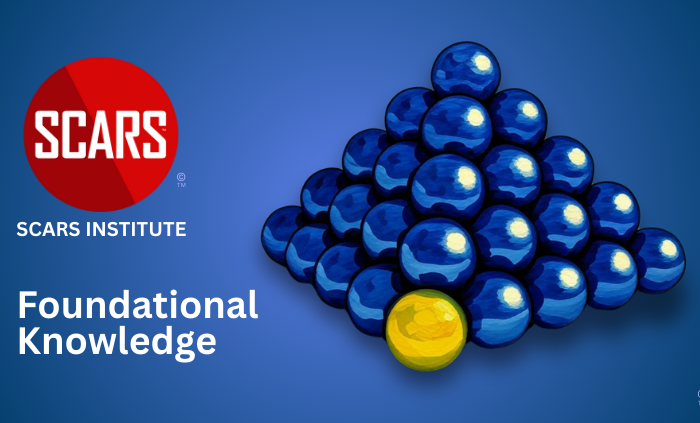The Camel’s Back Syndrome
A Metaphor for Vulnerability and Breakdown in Scam Victims
The Psychology of Scams
Authors:
• Vianey Gonzalez B.Sc(Psych) – Licensed Psychologist Specialty in Crime Victim Trauma Therapy, Neuropsychologist, Certified Deception Professional, Psychology Advisory Panel & Director of the Society of Citizens Against Relationship Scams Inc.
• Tim McGuinness, Ph.D. – Anthropologist, Scientist, Director of the Society of Citizens Against Relationship Scams Inc.
Article Abstract
The Camel’s Back Syndrome serves as a potent metaphor elucidating the vulnerabilities and collapse encountered by scam victims.
Capturing the gradual accumulation of stressors akin to straws on a camel’s back, it mirrors the incremental breakdown in victims’ psychological resilience during scams. Exploring this metaphor unveils the intricate process of scams, shedding light on the profound trauma post-discovery.
Implications extend to businesses, advocating for empathetic approaches, heightened awareness, and tailored support for victims. Understanding the syndrome aids in navigating interactions effectively, emphasizing trauma-informed methods. Empathy, education, and collaborative efforts emerge as pivotal in aiding victims’ recovery and preventing future victimization.
The Camel’s Back Syndrome Metaphor for Individual Vulnerability Before the Scam and Breakdown in Scam Victims After the Scam!
The Camel’s Back Syndrome Metaphor is a way to help everyone understand the stressors that scam victims experience through the course of the relationship scam experience. Metaphors often offer a glimpse into complex processes from a more relatable perspective.
When it comes to relationship scams and scam victims, the image of a camel burdened with ever-increasing amounts of straw until it succumbs to even the lightest additional weight aptly describes the gradual build-up of vulnerabilities and eventual breakdown in psychological resilience experienced by scam victims. Just as the camel’s back weakens with each added straw, so too does the victim’s emotional and cognitive capacity erode throughout the scam encounter.
Understanding the Camel’s Back Syndrome Metaphor
Unpacking this Camel’s Back Syndrome metaphor to understand its deeper implications for Scam Victims involves looking in the gradual process of relationship scams (either Romance Scams or Crypto Investment Scams, or others).
The Camel’s Back Syndrome metaphor aptly illustrates the cumulative stress experienced by scam victims, akin to the gradual addition of straws to a camel’s load until the final straw causes its collapse. In the context of scam victims, each interaction, emotional manipulation, or financial loss represents a straw, incrementally adding to their stress load. This steady accumulation of stressors weakens psychological resilience, akin to the weight placed on the metaphorical camel.
1. Incremental Vulnerabilities – One Straw at a Time
Scams don’t unfold overnight. They typically involve a protracted process of manipulation, deception, and emotional exploitation. During this process, the victim is subjected to a drip-drip-drip effect of stressors.
During the scam, victims often experience repeated emotional strain, financial loss, and deceitful interactions. Each instance further taxes their mental and emotional resources, resembling the mounting load on the camel’s back. As this stress builds, victims may begin to exhibit signs of cognitive dissonance, self-doubt, and heightened emotional turmoil. The final straw, often the realization of being scammed, mirrors the breaking point for the camel, leading to a breakdown in psychological resilience.
- Grooming: Subtle flattery, attention, and building trust, creating a false sense of security.
- Isolation: Separating the victim from their usual support network, weakening their ability to bounce back.
- Cognitive dissonance: Internal conflict between the victim’s self-image and the unfolding reality of the scam, leading to confusion and doubt.
- Financial pressure: Increasing demands for money or resources, creating anxieties and vulnerabilities.
Each of these stressors acts like an additional straw on the camel’s back, incrementally eroding the victim’s psychological defenses.
2. The Tipping Point – One Straw Too Many!
Over time, the accumulated stress surpasses the victim’s coping mechanisms. The metaphorical “last straw” can be any event that reveals the true nature of the scam, such as:
- Sudden demand for a large sum of money.
- Disappearance of the scammer.
- Discovery of inconsistencies in the scam’s narrative.
Imagine a camel steadily laden with bundles of straw, each adding to its burden. It trudges on, seemingly resilient, until that final, seemingly insignificant addition triggers a dramatic collapse. This metaphorical image vividly captures the tipping point for many scam victims – the moment the accumulated stress overwhelms their coping mechanisms, leading to a psychological breakdown.
a. The Road to the Tipping Point:
Scams rarely unfold overnight. They’re often intricate webs of grooming, isolation, cognitive dissonance, and financial pressure. Think of each element as another straw piled onto the camel’s back:
-
Grooming: Flattery, attention, building trust, and emotional manipulation through amygdala hijacking create a false sense of security, like offering the camel a seemingly harmless treat before loading it with heavier burdens.
-
Isolation: Scammers often cut victims off from their usual support networks using gaslighting, weakening their resilience, like slowly tying the camel’s reins, restricting its freedom to seek help.
-
Cognitive Dissonance: The victim grapples with the conflicting narrative spun by the scammer and their own understanding of reality, creating internal turmoil like the camel struggling to maintain its balance under an increasingly lopsided load.
-
Financial Pressure: Increasing demands for money or resources add unbearable weight, like piling heavy sacks of gold onto the camel’s already strained back.
b. The Final Straw:
The tipping point can be triggered by any event that exposes the scam’s true nature, like:
- A sudden demand for a large sum of money.
- The scammer’s disappearance.
- Discovery of inconsistencies in the scam’s narrative.
This final straw, however, seemingly insignificant, shatters the carefully constructed illusion and unleashes the accumulated stress, resulting in:
-
Shock and Disbelief: The victim struggles to come to terms with the betrayal and loss, like the camel falling to its knees in disbelief.
-
Intense Emotions: A tidal wave of anger, shame, fear, and grief crashes over the victim, like a sudden flash flood overwhelming the desert landscape.
-
Cognitive Impairment: Confusion, memory problems, and difficulty making decisions become prevalent, like the camel losing its sense of direction and struggling to walk.
-
Physical Symptoms: Headaches, muscle tension, and even sleep disturbances can manifest, like the camel’s heavy breathing and trembling muscles reflecting its physical distress.
c. Beyond the Metaphor:
The Camel’s Back Syndrome serves as a powerful reminder that the impact of scams transcends financial loss. It highlights the complex and often invisible psychological burdens borne by victims, emphasizing the need for:
- Empathy and Support: Recognizing the fragility of victims at their tipping point and offering them safe spaces to heal and rebuild their lives.
- Awareness and Education: Raising public awareness about scam tactics and empowering individuals to protect themselves from falling victim.
- Stronger Regulations and Law Enforcement: Cracking down on scammers and holding them accountable for their actions.
By understanding the tipping point and its significance, we can move beyond victim-blaming narratives and create a more supportive environment for those who have been deceived. Remember, the camel deserves not just a lighter load, but a path towards recovery and resilience which SCARS provides through our support & recovery program.
3. Profound Trauma – The Collapse
The aftermath of the scam is not merely an emotional setback; it can leave deep psychological scars. The combination of emotional distress, cognitive disruptions, and physical reactions creates a traumatic experience that lingers long after the initial discovery.
Following the discovery of the scam, the accumulated stressors unleash profound trauma, akin to the camel’s collapse under the weight. This trauma encompasses feelings of betrayal, shame, anger, and deep-seated emotional wounds that can take a severe toll on victims’ mental health and overall well-being. Understanding the Camel’s Back Syndrome aids in illustrating how the gradual buildup of stressors eventually overwhelms psychological resilience, leading to the profound trauma experienced by scam victims’ post-discovery of the crime.
There is much more information about scam victim trauma on this site and on RomanceScamsNOW.com
4. Implications for Businesses that Interact with Victims
Understanding the Camel’s Back Syndrome’s application to scam victims offers valuable insights for businesses, particularly those focused on:
- Fraud Prevention: Educating employees and customers about the gradual nature of scams and the subtle tactics used by scammers can raise awareness and help identify vulnerabilities early on.
- Employee Support: Recognizing the potential for psychological breakdown in scam victims can motivate businesses to offer support resources and create a safe space for employees to confide in and seek help after falling prey to a scam.
- Customer Service: Treating victims with empathy and understanding, avoiding blame, and offering practical assistance can alleviate the trauma and promote healing.
Businesses in diverse sectors, from banking to customer service, often encounter individuals who have fallen victim to scams. Interacting with these vulnerable individuals requires a nuanced approach that goes beyond typical customer service or sales interactions. Understanding the complexities of the Camel’s Back Syndrome helps navigate these interactions effectively and offer meaningful support.
a. Heightened Vulnerability and Emotional Distress:
- Trauma-Informed Approach: Recognize the potential for shock, disbelief, fear or anger, shame, and anxiety in scam victims. Approach them with empathy and non-judgment, prioritizing their emotional well-being over immediate business objectives.
- Active Listening and Validation: Create a safe space for victims to share their experiences without interruption. Acknowledge the harm they’ve suffered and validate their emotions.
- Clear and Concise Communication: Use simple language and avoid technical jargon. Ensure they understand the information you provide and answer their questions patiently.
b. Cognitive Impairment and Decision-Making Challenges:
- Simplified Processes and Procedures: Avoid complex forms, contracts, or technical instructions. Streamline processes and offer alternative ways to complete tasks, considering their potential cognitive fog.
- Enhanced Accessibility: Provide support through multiple channels, including phone, email, and live chat, to cater to different preferences and cognitive abilities.
- Patient Guidance and Support: Be willing to walk them through processes step-by-step and offer additional assistance if needed. Understand that decision-making might be delayed due to the trauma.
c. Increased Security Risks and Trust Issues:
- Enhanced Security Measures: Be vigilant about potential attempts by the same or other scammers to target the victim through your platform or services. Offer additional security features, if available, for their peace of mind.
- Rebuild Trust Gradually: Earn back their trust through consistent transparency, ethical business practices, and clear communication about data security protocols.
- Collaboration with Relevant Authorities: If the scam involves potential criminal activity, cooperate with law enforcement authorities while respecting the victim’s privacy and wishes.
d. Business Benefits of Supportive Interactions:
- Positive Brand Image: Building a reputation for empathy and support towards scam victims can enhance your brand image and attract ethical consumers.
- Loyal Customer Base: Cultivating positive relationships with victims during their recovery can translate into long-term loyalty and advocacy for your business.
- Enhanced Employee Satisfaction: Equipping employees with the skills to interact effectively with scam victims can foster a more compassionate and purpose-driven work environment.
e. Additional Considerations:
- Training Employees: Invest in training programs for employees to handle interactions with scam victims effectively, equipping them with communication skills and relevant knowledge.
- Partnerships with Support Organizations: Collaborate with mental health professionals, victim support groups, or financial literacy organizations to offer victims holistic support beyond your immediate services.
- Advocacy for Consumer Protection: Raise awareness about scams and advocate for stronger consumer protection measures to prevent future victimization.
By recognizing the lasting impact of the Camel’s Back Syndrome on scam victims and adopting a trauma-informed approach, businesses can provide vital support during a critical time. This not only benefits the recovery of individuals but also builds trust, loyalty, and a positive brand image that sets them apart in today’s competitive landscape.
Summary
The Camel’s Back Syndrome metaphor provides a powerful lens through which to understand the vulnerabilities and eventual breakdown experienced by scam victims. By recognizing the gradual nature of the harm and its profound impact, everyone can play a crucial role in supporting scam victims in their recovery journey and preventing similar incidents in the future.
More:
- The Amygdala Hijack! A SCARS™ Guide [Infographic][Updated] (romancescamsnow.com)
- Gaslighting (romancescamsnow.com)
- What is the Purpose of Gaslighting? (romancescamsnow.com)
- Scam Victim Resiliency – Why It Is So Much Worse After The Scam (scamsnow.com)
- What Really Are Vulnerabilities That Lead To Scams? (scamsnow.com)
- Psychological Triggers/Emotional Triggers – What They Are And How They Work – 2023/2024 (scamsnow.com)
SCARS Resources:
- For New Victims of Relationship Scams newvictim.AgainstScams.org
- Subscribe to SCARS Newsletter newsletter.againstscams.org
- Sign up for SCARS professional support & recovery groups, visit support.AgainstScams.org
- Find competent trauma counselors or therapists, visit counseling.AgainstScams.org
- Become a SCARS Member and get free counseling benefits, visit membership.AgainstScams.org
- Report each and every crime, learn how to at reporting.AgainstScams.org
- Learn more about Scams & Scammers at RomanceScamsNOW.com and ScamsNOW.com
- Global Cyber Alliance ACT Cybersecurity Tool Website: Actionable Cybersecurity Tools (ACT) (globalcyberalliance.org)
- Self-Help Books for Scam Victims are at shop.AgainstScams.org
- Donate to SCARS and help us help others at donate.AgainstScams.org
- Worldwide Crisis Hotlines: International Suicide Hotlines – OpenCounseling : OpenCounseling
- Campaign To End Scam Victim Blaming – 2024 (scamsnow.com)
-/ 30 /-
What do you think about this?
Please share your thoughts in a comment below!
More ScamsNOW.com Articles
-/ 30 /-
What do you think about this?
Please share your thoughts in a comment above!
SCARS LINKS: AgainstScams.org RomanceScamsNOW.com ContraEstafas.org ScammerPhotos.com Anyscam.com ScamsNOW.com
reporting.AgainstScams.org support.AgainstScams.org membership.AgainstScams.org donate.AgainstScams.org shop.AgainstScams.org
youtube.AgainstScams.org linkedin.AgainstScams.org facebook.AgainstScams.org
ARTICLE RATING
TABLE OF CONTENTS
CATEGORIES
MOST POPULAR COMMENTED ARTICLES
POPULAR ARTICLES
U.S. & Canada Suicide Lifeline 988
![NavyLogo@4x-81[1]](https://scamsnow.com/wp-content/uploads/2025/04/NavyLogo@4x-811.png)
ARTICLE META
WHAT PEOPLE ARE TALKING ABOUT LATEST SITE COMMENTS
See Comments for this Article at the Bottom of the Page
on Transference And Emotional Danger After The Scam – 2024: “Thank you for the kind but firm reminder that the person in the stolen profile photo has their own life.…” Jul 9, 01:26
on ‘Mental Defeat’ – The Unique Condition Of Giving Up – 2024: “Thank you for another great article. I can see from this article that mental defeat would be debilitating to a…” Jul 9, 00:49
on Trust: Romance Scams Betrayal And Scam Victims – 2024: “This provided valuable insight that I can identify with” Jul 8, 16:44
on A Scam Victim in Extreme Distress – Stopping the Pain – 2024: “Your trust issues are very understandable. We are very sorry this happened to you. We suggest that you contact an…” Jul 8, 14:42
on A Scam Victim in Extreme Distress – Stopping the Pain – 2024: “My online counselors advised me to check myself in. I went to the hospital because I was suicidal. After I…” Jul 8, 13:44
on Scam Victim Catastrophizing Making Recovery Difficult 2024: “Excellent article on catastrophizing. I can understand how this could take a person down a rabbit warren of never ending…” Jul 8, 12:12
on The Self-Pity Trap & How To Overcome It – 2023 – [UPDATED 2025]: “I am not in the habit of feeling sorry for myself. After the deception, although it was not easy at…” Jul 8, 11:49
on Pride – A Dual Edged Sword For Scam Victims – 2023 [UPDATD 2024]: “Looking back over my life I have seen how pride has impacted me both positively and negatively. However the negative…” Jul 8, 09:08
on The Self-Pity Trap & How To Overcome It – 2023 – [UPDATED 2025]: “I felt self-pity while the enormity of my financial loss washed over me like a tsunami. The self-pity lasted only…” Jul 7, 18:55
on The Uniqueness Of Scam Victims Or Fraud Victims – 2024: “unfortunately all true. It is highly stressful dealing with the aftermath. I am being sued for the money I borrowed…” Jul 6, 12:50
on Scam Victims & Mental Health Blaming – 2023 [UPDATED 2025]: “For most of my life words have defeated me, made me feel insignificant, unwanted, unneeded. For this reason it is…” Jul 5, 13:36
on Substance Abuse Susceptibility And Scam Victims – 2024: “It is understandable how some would feel that alcohol or substance abuse would be helpful in handling their feelings after…” Jul 1, 20:36
on Scam Victims Use Work To Avoid Healing: “The last 6 years have been the most difficult of my life. The pandemic, having both parents in the hospital…” Jun 29, 18:38
on Entitlement Mentality And How Scam Victims Often Lose Their Path To Recovery – 2024: “Thank you for this discussion of entitlement. I can see from the descriptions listed that I have not felt entitlement.…” Jun 29, 18:22
on Samurai Wisdom and Rituals for Clearing the Mind After Scam Trauma – 2025 – [VIDEOS]: “A great guide on how to move forward in our recovery process with a calm mind, cleansed on an ongoing…” Jun 28, 07:34
on Delayed Gratification and Patience in Scam Victim Recovery – 2025 – [VIDEOS]: “We want to recover quickly and… we make new mistakes. How not to speed up the recovery process, how to…” Jun 28, 06:41
on The Unique Injury Of Betrayal Trauma On Scam Victims – 2024: “Primarily because you did not see it coming” Jun 27, 23:57
on Changes In A Scam Victim’s Life: “I really detest the way my trust in others has been affected by the scamming I went through. I used…” Jun 27, 14:47
on The Unique Injury Of Betrayal Trauma On Scam Victims – 2024: “Betrayal Trauma is the worst feeling ever. Why does it seem so much worse when a scammer does that to…” Jun 27, 14:34
Important Information for New Scam Victims
Please visit www.ScamVictimsSupport.org – a SCARS Website for New Scam Victims & Sextortion Victims
SCARS Institute now offers a free recovery program at www.SCARSeducation.org
Please visit www.ScamPsychology.org – to more fully understand the psychological concepts involved in scams and scam victim recovery
If you are looking for local trauma counselors, please visit counseling.AgainstScams.org
If you need to speak with someone now, you can dial 988 or find phone numbers for crisis hotlines all around the world here: www.opencounseling.com/suicide-hotlines
Statement About Victim Blaming
Some of our articles discuss various aspects of victims. This is both about better understanding victims (the science of victimology) and their behaviors and psychology. This helps us to educate victims/survivors about why these crimes happened and not to blame themselves, better develop recovery programs, and help victims avoid scams in the future. At times, this may sound like blaming the victim, but it does not blame scam victims; we are simply explaining the hows and whys of the experience victims have.
These articles, about the Psychology of Scams or Victim Psychology – meaning that all humans have psychological or cognitive characteristics in common that can either be exploited or work against us – help us all to understand the unique challenges victims face before, during, and after scams, fraud, or cybercrimes. These sometimes talk about some of the vulnerabilities the scammers exploit. Victims rarely have control of them or are even aware of them, until something like a scam happens, and then they can learn how their mind works and how to overcome these mechanisms.
Articles like these help victims and others understand these processes and how to help prevent them from being exploited again or to help them recover more easily by understanding their post-scam behaviors. Learn more about the Psychology of Scams at www.ScamPsychology.org
SCARS INSTITUTE RESOURCES:
If You Have Been Victimized By A Scam Or Cybercrime
♦ If you are a victim of scams, go to www.ScamVictimsSupport.org for real knowledge and help
♦ Enroll in SCARS Scam Survivor’s School now at www.SCARSeducation.org
♦ To report criminals, visit https://reporting.AgainstScams.org – we will NEVER give your data to money recovery companies like some do!
♦ Follow us and find our podcasts, webinars, and helpful videos on YouTube: https://www.youtube.com/@RomancescamsNowcom
♦ Learn about the Psychology of Scams at www.ScamPsychology.org
♦ Dig deeper into the reality of scams, fraud, and cybercrime at www.ScamsNOW.com and www.RomanceScamsNOW.com
♦ Scam Survivor’s Stories: www.ScamSurvivorStories.org
♦ For Scam Victim Advocates visit www.ScamVictimsAdvocates.org
♦ See more scammer photos on www.ScammerPhotos.com
You can also find the SCARS Institute on Facebook, Instagram, X, LinkedIn, and TruthSocial
Psychology Disclaimer:
All articles about psychology and the human brain on this website are for information & education only
The information provided in this and other SCARS articles are intended for educational and self-help purposes only and should not be construed as a substitute for professional therapy or counseling.
Note about Mindfulness: Mindfulness practices have the potential to create psychological distress for some individuals. Please consult a mental health professional or experienced meditation instructor for guidance should you encounter difficulties.
While any self-help techniques outlined herein may be beneficial for scam victims seeking to recover from their experience and move towards recovery, it is important to consult with a qualified mental health professional before initiating any course of action. Each individual’s experience and needs are unique, and what works for one person may not be suitable for another.
Additionally, any approach may not be appropriate for individuals with certain pre-existing mental health conditions or trauma histories. It is advisable to seek guidance from a licensed therapist or counselor who can provide personalized support, guidance, and treatment tailored to your specific needs.
If you are experiencing significant distress or emotional difficulties related to a scam or other traumatic event, please consult your doctor or mental health provider for appropriate care and support.
Also read our SCARS Institute Statement about Professional Care for Scam Victims – click here
If you are in crisis, feeling desperate, or in despair, please call 988 or your local crisis hotline.
More ScamsNOW.com Articles
A Question of Trust
At the SCARS Institute, we invite you to do your own research on the topics we speak about and publish. Our team investigates the subject being discussed, especially when it comes to understanding the scam victims-survivors’ experience. You can do Google searches, but in many cases, you will have to wade through scientific papers and studies. However, remember that biases and perspectives matter and influence the outcome. Regardless, we encourage you to explore these topics as thoroughly as you can for your own awareness.
















![scars-institute[1]](https://scamsnow.com/wp-content/uploads/2025/04/scars-institute1.png)
![niprc1.png1_-150×1501-1[1]](https://scamsnow.com/wp-content/uploads/2025/04/niprc1.png1_-150x1501-11.webp)

This comparison to the Camel’s Back really helped me identify how things played out for me during my crime. And it helps me to understand why I feel at times the way I feel. Some days I feel like it’s another day of one straw too many. I have felt this often since the scam – as though I cannot handle one more thing. But this comparison also makes me aware of just how much these criminals do to victims and how much damage is left behind. I know I felt it – but seeing it too really hit home. I’m not quite sure why I feel this way now after nearly 6 months past the ending of my crime. But I do feel this way.
My PBS included all of the signs in the road to the tipping point outlined in this article, but the actual tipping point was the sudden demand for a large sum of money.